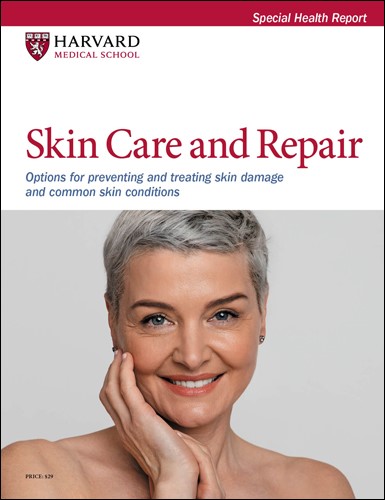Do hair dyes increase cancer risk?

Personal use of hair dyes is very common, with estimates that 50% or more of women and 10% of men over age 40 color their hair. However, with social distancing guidelines in place amidst the ongoing pandemic, many people have foregone their regular hair salon appointments. As natural hair colors get rooted out, let’s cut to a layered question: do permanent hair dyes increase cancer risk?
Decades of research, conflicting results
Hair dyes come in three major varieties: oxidative (permanent), direct (semi-permanent or temporary), and natural dyes. Most hair dyes used in the US and Europe — both do-it-yourself dyes and those used in salons — are permanent dyes. They undergo chemical reactions to create pigment that deposits on hair shafts and may pose the greatest cancer risk.
People are exposed to chemicals in hair dyes through direct skin contact or by inhaling fumes during the coloring process. Occupational exposure to hair dye, as experienced by hairstylists, has been classified as probably cancer-causing. However, it remains unclear whether personal use of permanent hair dyes increases risk for cancer or cancer-related death.
Many studies have explored the relationship between personal hair dye use and risk of cancer or cancer-related death. Conflicting findings have resulted from imperfect studies due to small study populations, short follow-up times, inadequate classification of exposures (personal or occupational) or hair dye type (permanent versus non-permanent), and incomplete accounting of cancer-specific risk factors beyond permanent hair dye use.
Permanent hair dye does not appear to increase overall cancer risk, says recent study
In a recent study in The BMJ, researchers at Harvard Medical School evaluated personal hair dye use and risk of cancer and cancer-related death. The study authors analyzed survey data from 117,200 women enrolled in the Nurses’ Health Study, collected over 36 years beginning in 1976. They tabulated information that included age, race, body mass index, smoking status, alcohol intake, natural hair color, permanent hair dye use (ever user vs never user, age at first use, duration of use, frequency of use), and risk factors for specific types of cancer.
Compared to non-hair dye users, participants who had ever used permanent hair dyes did not have an overall higher risk for cancer or cancer-related deaths.
Among specific cancers, there was slightly higher risk for basal cell carcinoma (the most common type of skin cancer) in ever-users compared to non-users. Risk for certain breast cancers and ovarian cancers seemed to increase with longer-term use of permanent dye. Women with naturally dark hair seemed to have increased risk for Hodgkin lymphoma, and women with naturally light hair were observed to have higher risk for basal cell carcinoma.
The authors were cautious in reporting their findings, concluding that further investigation is needed to better understand associations that were identified. In addition, we should keep in mind that association does not prove causality.
Well-designed study also had some limitations
This was a large, well-designed study with high participant response rates. The researchers analyzed detailed data, allowing them to tease out the degree to which cancer risk was attributable to personal permanent hair dye use rather than to other potential risk factors.
This study also had several limitations. First, participants were female nurses of mostly European descent, meaning the findings are not necessarily generalizable to men or to other racial or ethnic groups. Next, the study could not account for every single cancer risk factor (for example, exposure to pesticides and other environmental chemicals). Data were not collected on other hair grooming products beyond hair dyes, and subjects may have mistakenly reported use of permanent hair dyes when they were in fact using semi-permanent or natural dyes. Without data on actual color of hair dyes used, the authors assumed that hair dye color correlated with natural shades of hair. This assumption may miscalculate true chemical exposures, such as in the case of dark-haired users who had additional chemical exposures from stripping the natural darker pigment.
To dye or not to dye?
Once pandemic restrictions lift, some may reconsider whether to dye their hair. The key highlights from this study are:
- Personal permanent hair dye use did not increase risk for most cancers or cancer-related death. This is reassuring, but continued safety monitoring is needed.
- Additional research is needed to study diverse racial and ethnic backgrounds, specific hair dye colors (light versus dark), cancer subtypes, and exposure levels (personal versus occupational).
- Though this study exposed possible associations between permanent hair dye use and increased risk for some cancers, there is not enough new evidence to move the needle on recommendations for personal permanent hair dye use. Until more is known, consider your personal and family histories when deciding whether to use permanent hair dyes. When in doubt, check with your doctor for more guidance.
About the Author

Shinjita Das, MD, Contributor
Disclaimer:
As a service to our readers, Harvard Health Publishing provides access to our library of archived content. Please note the date of last review or update on all articles.
No content on this site, regardless of date, should ever be used as a substitute for direct medical advice from your doctor or other qualified clinician.













